BACK TO HOME
Sugarbush Management
- 24 STORIES
- PAGE: 1 2 3
- SHOW ALL

Caterpillars are back this summer, and hungry
Paul Post | June 21, 2022
WEST CHAZY, N.Y.—They're back and they're hungry.
A widespread invasion of Lymantria dispar, previously called gypsy moths—now known as the more politically correct spongy moth—is expected to be larger than last year's infestation that impacted an area from Michigan to northern New York and Vermont.
Tiny caterpillars emerge in spring and devour many types of hardwood tree leaves and some evergreens, completely defoliating forests where outbreaks are most severe.
"Leaves are usually eaten soon enough in the year that trees will put out a new flush of leaves, but this takes energy away from the trees' stored pool of energy, the same energy source (sugars) we are pulling from during the maple season," said Adam Wild, director of Cornell University's Uihlein Maple Research Center in Lake Placid, N.Y.
"One year of defoliation will more than likely not kill the tree, but if the tree is already stressed it's going to add to the tree's demise. It could also impact our future maple production seasons," Wild said. [ MORE ]
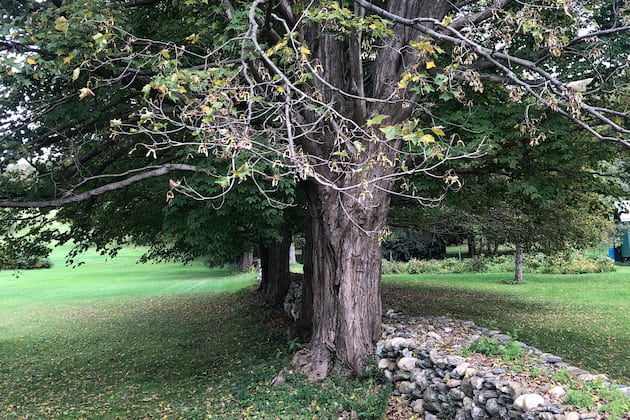
Trees looking terrible and probably infected with anthracnose
Peter Gregg | September 22, 2021
STILLWATER, N.Y.—It’s not your imagination, the trees look terrible.
Trees across the Maple Belt have a curled, brownish look with dropping leaves and premature color changes, with some turning color in the middle of August.
“I don't believe I have observed sugar maples transition in this manner and in the quantity we are currently observing,” said Linda White, a ranger with the National Park Service in Stillwater, N.Y. who has been observing trees for the USA National Phenology Network for 25 years.
White said on Sept. 16 that the trees were the worst she’d ever seen them.
Sugarmakers have been noticing a decline in trees since the spring.
Experts are blaming most of the problem on Maple anthracnose, a fungal disease that won't kill the tree but sure makes them unsightly. [ MORE ]
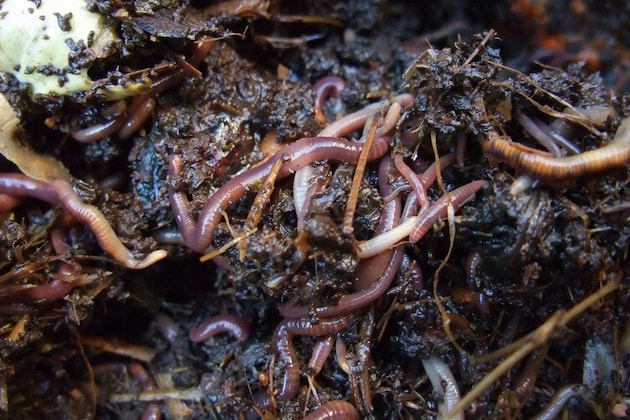
Earthworms could be killing the maples of the Upper Midwest
Jesse Hirsch | September 13, 2021
HOUGHTON, Mich.—Worms could be killing maples.
They're the darlings of the gardening world. But a university study suggests we should rethink their role in soil.
In recent years, earthworms have taken something of a star turn. While not as lauded as the beleaguered honeybee, the little wrigglers are largely viewed as a crucial building block to sustainable agriculture.
But if you consider yourself a superfan, we’ve got some bad news: Worms are causing trouble in the forest.
A study from Michigan Technological University revealed how earthworms are linked to a “dieback” in the Upper Midwest’s sugar maple trees.
The study resulted from a what foresters observed as a noticable decline in Michigan’s prized sugar maples, renowned for their foliage, lumber and (of course) sugary sap.
Reports had been coming in from local foresters that many maples were looking quite unhealthy, with naked limbs and minimal new growth.
In looking for causes, lead researcher Dr. Tara Bal said her team wasn’t initially focused on earthworms. [ MORE ]
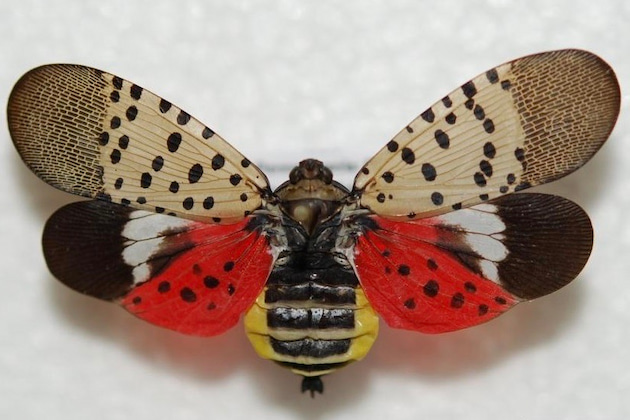
Maple-eating Spotted Lanternfly spotted in Vermont
Peter A Gregg | September 7, 2021
MONTPELIER, Vt.—A maple-eating invasive insect from China has been found in Vermont.
The Vermont Agency of Agriculture, Food and Markets (VAAFM) was alerted in August that a live ‘Spotted Lanternfly’ was captured at a business in Rutland while unloading a truck originating from a state known to have laternfly infestations.
The business owners suspected the bugs were odd and brought them to agriculutre officials at the Forestry Building at the Rutland State Fair on August 17.
Sugarmakers have been on the lookout for the pest since it was first discovered in Pennsylvania in 2014.
The pest is known to attack maple trees as well as many other agricultural fruit crops such as grape, apple, cherry and peach. [ MORE ]
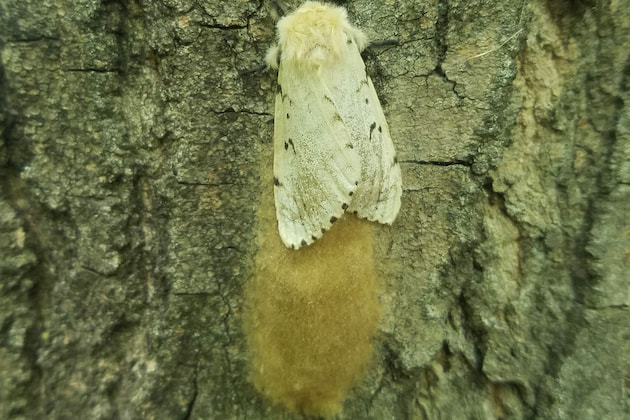
Producers are urged to check for Gypsy moth eggs this summer
Peter Gregg | July 16, 2021
ALBANY, N.Y.—This summer look for egg masses.
Officials are encouraging sugarmakers to check trees and outbuildings for egg masses of the Gypsy moth, which had huge outbreaks throughout the Maple Belt this spring.
The egg masses are found usually on the trunk of the tree and underside of larger branches, according to Adam Wild of the Cornell Maple Program in Lake Placid, N.Y.
"They can be close to the ground or all the way up the trunk," Wild said.
Some producers were seeing egg masses on mainline tubing.
The egg masses are larger and can typically be seen from the ground. Binoculars can also help. [ MORE ]
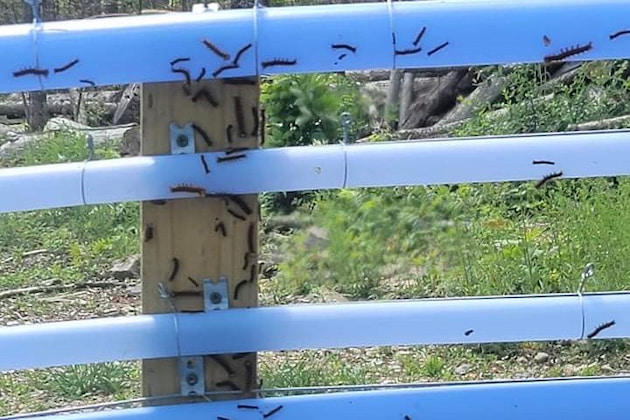
'Biblical' infestation of Gypsy moth caterpillars are attacking sugarbushes in the Northeast
Peter Gregg | June 11, 2021
WEST CHAZY, N.Y.—Gypsy moth caterpillars are attacking sugarbushes.
“It is truly biblical in proportion with larvae crawling everywhere, dropped on you from above and even eating foliage from hay in the fields,” said Laura Trudeau, one of the operators at Parker Family Maple in West Chazy, N.Y. where with husband Mike Parker, upwards of 100,000 trees are tapped.
Trudeau said the farm spent $47,000 to spray their sugarbush with Bacillus thuringiensis, called "Bt,” a natural insecticide that is the only approved spray for use in sugarbushes.
[ MORE ]
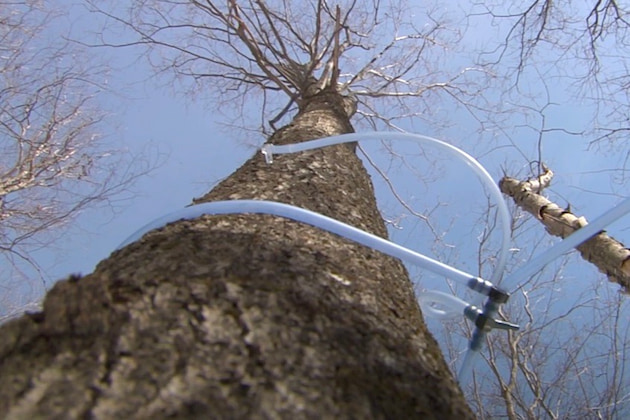
Experts say leasing 5,000 taps or more is the best option to make money in this business
Paul Post | May 14, 2021
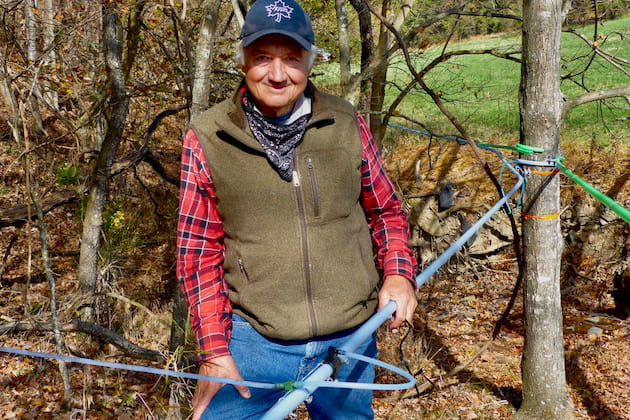
Think like a tree. Get to know your sap.
Paul Post | December 15, 2020
FRANKLIN, W.V.—Get to know your sap.
“We’re going to try to think like a tree," said industry expert Michael Rechlin, Ph.D. of Future Generations University.
During a recent webinar, The Science Behind the Sweetness of Sap Flow, Rechlin explained the hows and whys of the annual miracle of sap flow.
"We’re going to try to figure out from a tree's perspective why that sap drips out of a tree,” he said.
His talk covered evolutionary biology, chemistry, anatomy, tree physiology, physics and biology.
The sap flow process is the result of trees response over many eons to cold weather, specifically long, hard winters.
“Life originated in the tropics and as trees, like people and animals, moved north they had to find solutions to the problem of winter,” Rechlin said. [ MORE ]






























